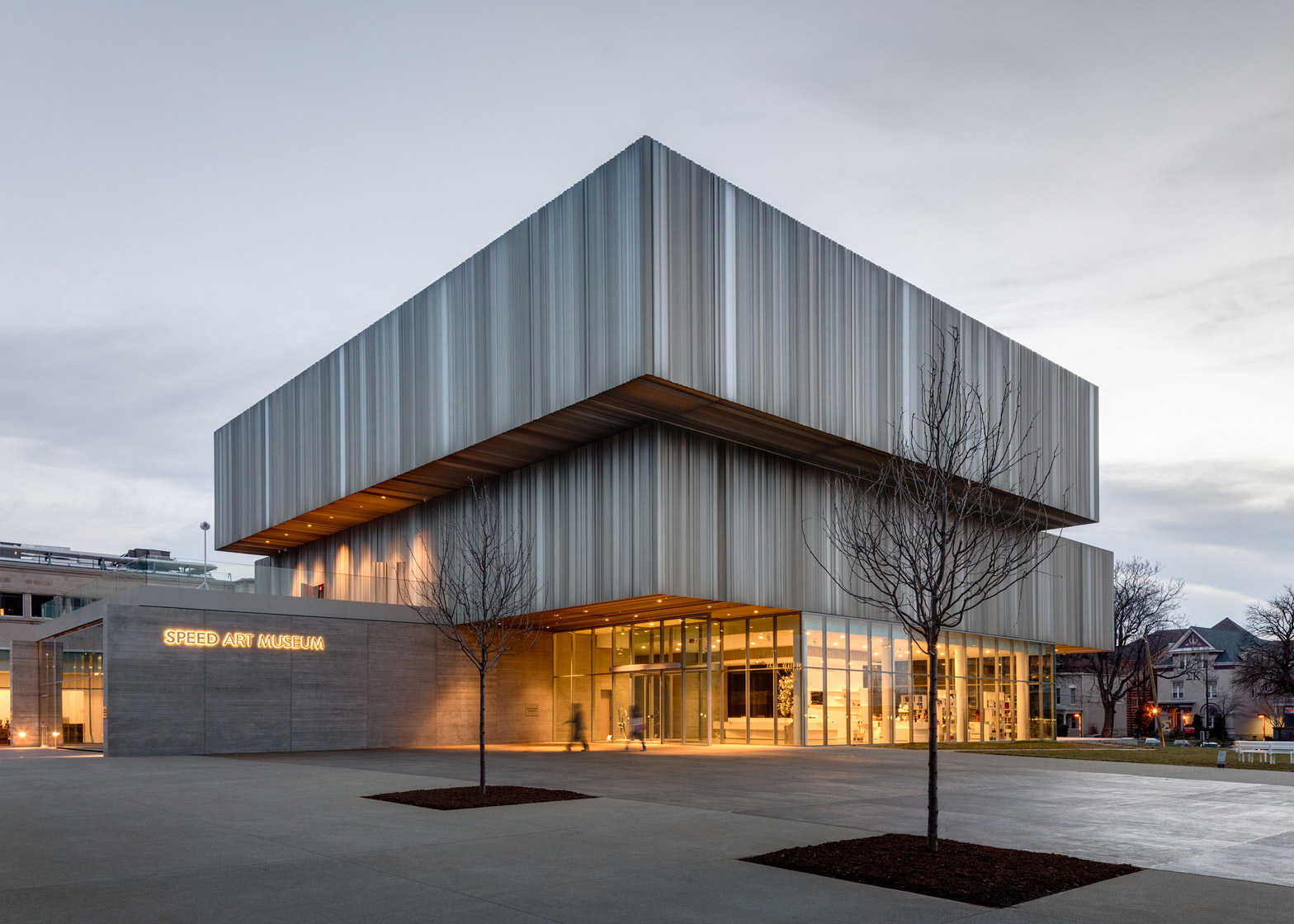Los Angeles architecture firm wHY has completed an expansion of the Speed Art Museum in Louisville, Kentucky, featuring facades of fritted glass and corrugated metal panels.
The project includes the renovation of the 1927 Beaux Arts building and a pair of new additions, including a 5,500-square-metre North Pavilion housing the modern and contemporary art galleries.
The North Pavilion features a fritted glass and corrugated metal panel facade with a cantilevered interior staircase made visible on the exterior.
The space includes a triple-height hall with a large site-specific sculpture by American artist Spencer Finch suspended from the ceiling.
Two floors of galleries are stacked above in a pair of volumes that are shifted off-centre.
Outside, the textured panels relate to the details of the Beaux Arts building and allow the appearance of the pavilion to change with light conditions throughout the day.
"The corrugated, anodised metal panels reflect and connect to the existing historic building mouldings in a contemporary way," wHY founder Kulapat Yantrasast told Dezeen. "Different angles of corrugation play with light and create different shades of the same colour, the same way the mouldings give an interesting effect to the existing building."
A rear addition on the south side of the building includes a new theatre for the museum's expanded cinema programme and a cafe with an outdoor terrace.
Working with the local architecture firm KNBA, wHY also renovated the original building, which has been added to many times over the years, to simplify circulation and improve the visitor experience.
"Rather than create a stand-alone expansion we wanted to activate the original building from multiple points in order to heal the whole," said Yantrasast. "We called it 'acupuncture architecture'."
WHY was selected for the project in 2008, following an international search that included finalists BIG, Henning Larsen, Studio Gang, SANAA, Snøhetta, and Gluckman Mayner.
The Speed Art Museum, which first opened in 1927, is the largest art museum in the state, with collections ranging from antiquity to contemporary art. It is located on the campus of the University of Louisville, though it is independent from the school.
WHY also recently completed an art school at Pamona College in California with a large curving roof.
Photography is by Rafael Gamo.

